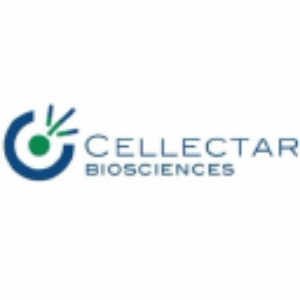Cellectar Biosciences’ Iopofosine I 131 Exceeds Primary Endpoint in Waldenstrom’s Macroglobulinemia Pivotal Study with 78% of Major Response Patients Remaining Progression Free at 18 Months
Rhea-AI Summary
Cellectar Biosciences (NASDAQ: CLRB) announced positive results from its CLOVER WaM pivotal study evaluating iopofosine I 131 for relapsed/refractory Waldenstrom's macroglobulinemia (WM). The study achieved an 80% overall response rate and a 56.4% major response rate, exceeding the primary endpoint of 20%. Notably, 78% of major response patients remained progression-free at 18 months.
The study included heavily pretreated patients, with 27% refractory to all available therapies and 40% dual-class refractory. Iopofosine I 131 demonstrated efficacy across challenging subgroups and was well-tolerated. Cellectar plans to submit an NDA in Q4 2024, seeking priority review.
Positive
- 80% overall response rate achieved, significantly exceeding expectations
- 56.4% major response rate, surpassing the 20% primary endpoint
- 98.2% disease control rate in heavily pretreated patients
- 78% of major response patients remained progression-free at 18 months
- Efficacy demonstrated across difficult-to-treat subgroups
- Well-tolerated safety profile with manageable adverse events
- NDA submission planned for Q4 2024 with potential priority review
Negative
- Iopofosine I 131 is still an investigational agent, not yet approved for use
News Market Reaction 1 Alert
On the day this news was published, CLRB declined 18.54%, reflecting a significant negative market reaction.
Data tracked by StockTitan Argus on the day of publication.
56.4% major response rate exceeded20% primary endpoint98.2% disease control rate achieved in heavily pretreated patients- Responses shown in difficult-to-treat, high-needs patient populations with approximately
27% of patients refractory to all available therapies and40% dual-class refractory (BTKi and rituximab)
FLORHAM PARK, N.J., July 23, 2024 (GLOBE NEWSWIRE) -- Cellectar Biosciences, Inc. (NASDAQ: CLRB), a late-stage clinical biopharmaceutical company focused on the discovery, development and commercialization of drugs for the treatment of cancer, today announced positive results from its CLOVER WaM pivotal study evaluating iopofosine I 131, a potential first-in-class, targeted radiotherapeutic candidate for the treatment of relapsed/refractory Waldenstrom’s macroglobulinemia (WM) patients that received at least two prior lines of therapy, including Bruton tyrosine kinase inhibitors (BTKi’s). CLOVER WaM is the first and largest WM study to date in a highly refractory patient population, including patients who are refractory to all available treatment categories.
As of May 31, 2024, results in the CLOVER WaM study (NCT02952508) had an overall response rate (ORR) of
“Treatment options for relapsed or refractory WM patients are limited with a critical need for new therapies with novel mechanisms of action. Currently, only about
Secondary endpoints of disease control rate (
“The outcomes observed in this study continue to far exceed expectations and provide evidence of the potential for iopofosine in a broad range of WM patients, including difficult-to-treat subgroups. We believe with these results that iopofosine I 131 has the potential to become the standard-of-care therapy for relapsed/refractory patients,” said James Caruso, president and CEO of Cellectar. “It is our commitment to ensure that iopofosine will be made available to patients awaiting a meaningful new treatment option. To this end, we plan to submit our NDA in the fourth quarter of 2024 and will be seeking priority review, which provides an estimated six-month regulatory review period.”
Iopofosine I 131 was well tolerated and its toxicity profile was consistent with the company's previously reported safety data. Importantly, and unlike other cancer therapies, patients on iopofosine did not experience any cardiovascular, renal, or liver toxicities, and no peripheral neuropathy or significant bleeding. The safety profile was consistent with selective targeting of tumor sites with clinically negligible off-target effect outside the hematologic system. The most commonly reported treatment emergent adverse events were hematologic in nature (thrombocytopenia, neutropenia and anemia) and were predictable and manageable. All patients recovered from cytopenias within a few weeks post nadir.
*Iopofosine I 131 is an investigational agent and has not been approved for use in any country, for any indication.
Conference Call & Webcast
The company will host an event on July 24, 2024, at 8:00 a.m., EDT, to provide a comprehensive overview of the CLOVER WaM study data, the current WM treatment landscape, unmet needs for patients with this disease, and opportunities to improve patient outcomes.
The event will feature both company leadership and key investigators. Details are as follows:
Conference Call Details
Date: July 24, 2024
Time: 8:00 a.m. EDT/ 5:00 a.m. PDT
Dial-in number: 1-800-717-1738
Webcast link: click HERE
A replay of the conference call will be available on the Events section of the company’s investor relations website.
About Waldenstrom’s Macroglobulinemia
WM is a B-cell malignancy characterized by bone marrow infiltration of clonal lymphoplasmacytic cells that produce a monoclonal immunoglobulin M (IgM) that remains incurable with available treatments. The prevalence in the US is approximately 26,000 with 1,500-1,900 patients being diagnosed annually. Approximately 11,500 patients require treatment in the relapsed or refractory setting and there are an estimated 4,700 patients requiring 3rd line or greater therapy. There are approximately 1,000 patients that have exhausted all current treatment options by 3rd line because they are ineligible or intolerant to those existing therapies. Therefore, the total addressable market for 3rd line or greater therapy is approximately 5,700 patients. There are no FDA approved treatment options for patients progressing on BTKi therapy. BTKi therapies do not demonstrate complete response rates and require continuous treatment. Approximately
About Cellectar Biosciences, Inc.
Cellectar Biosciences is a late-stage clinical biopharmaceutical company focused on the discovery and development of proprietary drugs for the treatment of cancer, independently and through research and development collaborations. The company’s core objective is to leverage its proprietary Phospholipid Drug Conjugate™ (PDC) delivery platform to develop the next-generation of cancer cell-targeting treatments, delivering improved efficacy and better safety as a result of fewer off-target effects.
The company’s product pipeline includes lead asset iopofosine I 131, a small-molecule PDC designed to provide targeted delivery of iodine-131 (radioisotope), proprietary preclinical PDC chemotherapeutic programs and multiple partnered PDC assets.
For more information, please visit www.cellectar.com or join the conversation by liking and following us on the company’s social media channels: Twitter, LinkedIn, and Facebook.
Forward-Looking Statement Disclaimer
This news release contains forward-looking statements. You can identify these statements by our use of words such as "may," "expect," "believe," "anticipate," "intend," "could," "estimate," "continue," "plans," or their negatives or cognates. These statements are only estimates and predictions and are subject to known and unknown risks and uncertainties that may cause actual future experience and results to differ materially from the statements made. These statements are based on our current beliefs and expectations as to such future outcomes including our expectations regarding the CLOVER WaM pivotal trial. Drug discovery and development involve a high degree of risk. Factors that might cause such a material difference include, among others, uncertainties related to the ability to raise additional capital, uncertainties related to the disruptions at our sole source supplier of iopofosine, the ability to attract and retain partners for our technologies, the identification of lead compounds, the successful preclinical development thereof, patient enrollment and the completion of clinical studies, the FDA’s review process and view of our data, and other government regulation, our ability to maintain orphan drug designation in the United States for iopofosine, the volatile market for priority review vouchers, our pharmaceutical collaborators' ability to successfully develop and commercialize drug candidates, competition from other pharmaceutical companies, product pricing and third-party reimbursement. A complete description of risks and uncertainties related to our business is contained in our periodic reports filed with the Securities and Exchange Commission including our Form 10-K for the year ended December 31, 2023, and our Form 10-Q for the quarter ended March 31, 2024. These forward-looking statements are made only as of the date hereof, and we disclaim any obligation to update any such forward-looking statements.
Contacts
MEDIA:
Claire LaCagnina
Bliss Bio Health
315-765-1462
clacagnina@blissbiohealth.com
INVESTORS:
Chad Kolean
Chief Financial Officer
investors@cellectar.com








